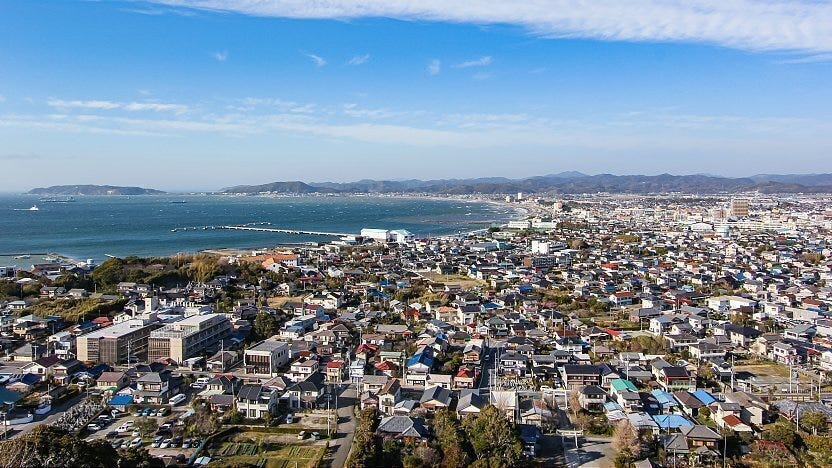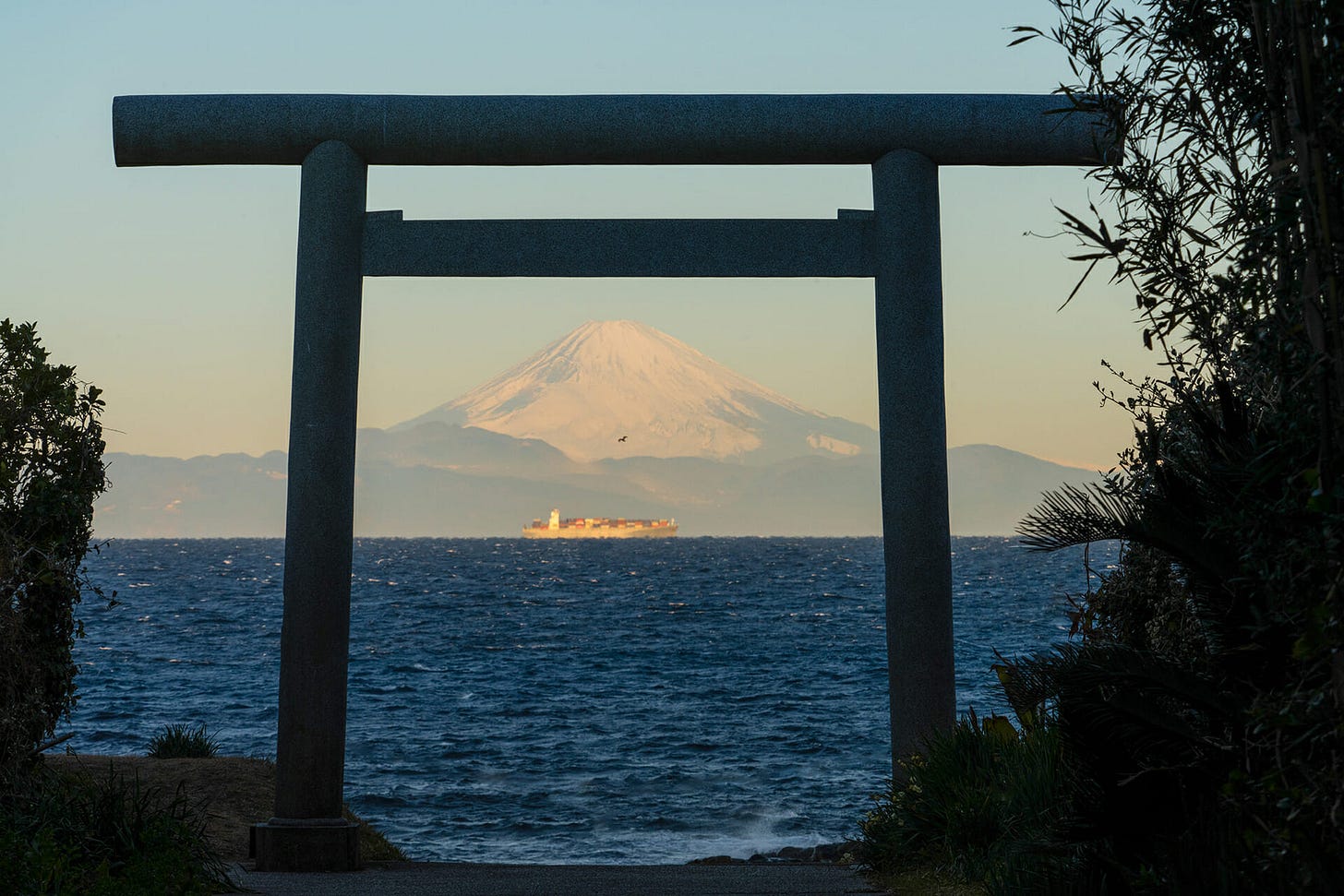The town closest to us is Tateyama, population 40,000…and falling. It’s a has-been domestic tourist spot that most Japanese know the name of, yet few visit with any regularity.
But it shouldn’t, by any stretch of the imagination, be a has-been.
Tateyama has been on my mind these past few weeks. When we drive through it to grab groceries and supplies, I can’t help but notice the closed-up shops, the tattered billboards, and the under-booked hotels.
You’d think Tateyama would have more vibrancy. It’s an as yet unspoiled seaside location with (warning: cliché ahead) breathtaking views.
But if towns had a smell, Tateyama’s would be of age—not just the average resident who seems to be about 70, but the shops, restaurants, buildings, and infrastructure too give off mustiness.
While Tateyama has farming and fishing to keep its economy puttering along, tourism is its most obvious turbo charge, and it really isn’t happening on anything the scale it should.
Yes, I know what you’re thinking. Jack, you’re a resident there so you should be overjoyed that goobers from god-knows-where are not crawling over everything and clogging the roads.
Indeed I love running the dog over empty beaches, but I worry about Tateyama as do many residents here. We are all impacted in the end if the town does so poorly.
So why should Tateyama do so much better?
The city is a speedy 90-minute drive from Tokyo. That’s half the time it takes to get to imho over-trammeled competitor “beach” cities like Atami, Shimoda, and the Shonan stretch of mess.
When you walk through Tateyama you are struck by the natural landscape gifts that have literally fallen into its lap. And the city did have the foresight decades ago to preserve its beachfront. Nothing but a bike/walking path has been approved for construction along the mile-long stretch of sand fronting the city. Well done, Tateyama!
The city offers a 180-degree wide view across the dark blue and often white-capped Sagami Bay most directly to the Miura Peninsula and the city of Yokosuka. Gaze in a more southerly direction and you can see a huge and unobstructed Mt. Fuji in Shizuoka Prefecture, the Izu Peninsula, and the Oshima Island chain.
Tateyama is not all about the beach. There are also two serious golf courses, fishing boat trips, hiking trails, and hotels and inns of all ranks and styles.
Yet despite these gifts and an infrastructure geared toward tourist visitors (if/when they come), Tateyama still lacks a “branding pull” that puts it higher on the lists of today’s travelers. Witness this past Golden Week stretch of national holidays. We all braced for traffic backups and unbookable restaurants, but almost nothing changed. Residents sauntered onto golf courses, breezed into restaurants without reservations, and not a traffic intersection backed up.
Great! But not. If Tateyama can’t pull in visitors on a six-day national spending spree, call the doctor.
So what’s the issue?
Most everything the city offers today was developed with yesterday’s generations in mind. There is a smell of old ‘Bubble’ everywhere and while that era’s people are still with us and have money under their mattresses, they are only getting older. (They were also never big on domestic tourism to be frank.)
Tateyama like much of Japan needs to make a gutsy shift toward the generation coming as these are the people who will rediscover it…or not.
A friend and I were driving along the coastal road of the city spitballing creative ideas. We talked about events and experiences the olds here are very unlikely to come up with, let alone green light for a try.
Summer evening cocktails and dinners on the beach followed by outdoor film screenings. Up-and-coming artist fairs, Millenial-designed treasure hunts, windsurfing and skateboarding competitions, young writer spotlight workshops, Mt. Fuji Instagramming contests, pop-up food festivals with top chefs under 30…all would breathe new life into the town’s image.
Tateyama could also bring its average resident age down quickly by offering generous and real tax and housing incentives to newcomers in their 20s and 30s (aka, the unbelievably-screwed-over-generations).
Tateyama is putting its toe into a few of these waters. A triathlon is planned and I do see entrepreneurial businesses here and there, but I bet they’re propelled with zero municipal incentives. There are some younger chefs, some scuba shops, and ecological-oriented tours.
Yet it’s no longer a time when a place like Tateyama can simply say hello to random odd-ball newcomers without offering any more systematic support to attract and keep them. It’s Code Blue out there, and change should now be radical and transformative.
It’s past time for this picture-perfect peninsula to move past 1987 golf, tennis, and Hawaii-themed luau resorts.







Interesting article. The closest I've got to Tateyama was last summer when I visited the temple complex near Nokogiriyama with a bus tour. From where I live, it's rather far and time consuming to reach, but I hope to go one day.
I think I recognize this conversation